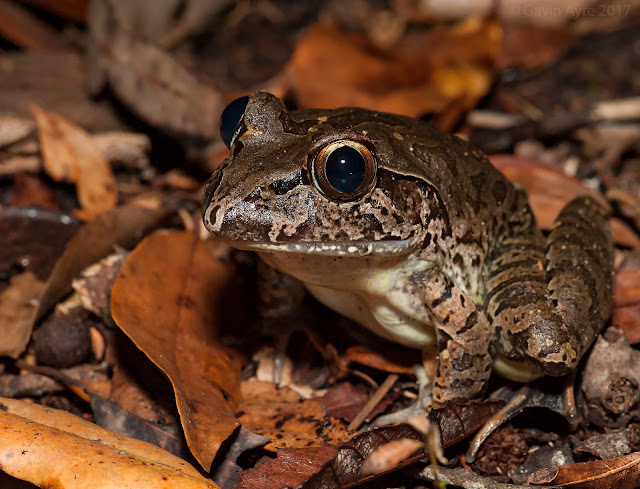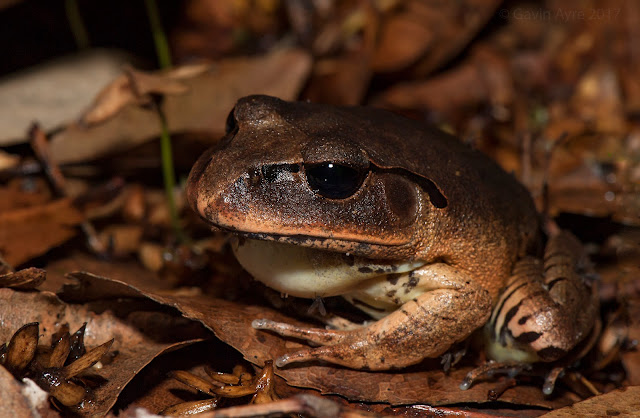 |
| Be still my pounding heart ! A truly magnificent adult Mixophyes iteratus |
What a night it was. The highlight was encountering a major breeding event for the endangered Giant barred frog, Mixophyes iteratus. As mentioned in a previous past, this species was utterly devastated (presumably) by Chytrid fungus, and in all my years of working locally in the forests of the Hunter valley and Manning Valley, I'd only encountered ONE specimen. Until Saturday 11th February that was when I found a second specimen in a completely new location.
Well, I visited an unpublished site for M.iteratus that I know of, deep in the rainforest, from my time working with the Amphibian Research Group at the Uni of Newcastle. It was a spectacular night, the stuff of pure fantasy, with Mixophyes iteratus calling all around us. It was reminiscent of my trip with Mike Mahony to a location well to the north of Newcastle where there was roughly a kilometre of M.iteratus calling and echoing along the banks of a rainforest stream.
On Friday night, I actually stopped counting after 20 individuals. They were literally everywhere. I took a few representative images, taking great care not to touch or disturb the animals, and quickly left them to their business. The last thing we were going to do was interfere with an endangered animal in any way, particularly when they were in the middle of a massive breeding event.
Yesterday I discussed the event with one of my contacts in the Amphibian Research Group at the University of Newcastle, and he knew the species has definitely made a comeback. But he was utterly shocked at the size of the breeding event we'd encountered. Sounds like the old crew (and some new members) might be working on this species again soon !
 |
| Mixophyes iteratus |
 |
| Very large female Mixophyes iteratus |












